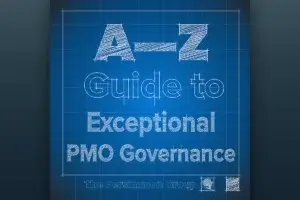Working with clients across industries, I see people working hard. But, I also see some wasted effort. The waste comes from not leading team members towards a clear endstate. Instead, we are creating a lot of action through goal setting; it’s become a “check-the-box” exercise. The caution here is that action does not equal progress.
To help better yourself and your team, try this technique. When executed well it can improve performance immediately by shifting from starting goals to starting with outcomes.
The Technique:
1. Start with the end in mind and describe what it looks like.
Goal setting is valuable. It measures action well–but it assumes that if X happens, then y will occur. For example, if you take a project management class, then you will be a better project manager. You can see how this plays out over the year. The person enrolls in and takes the project management course, and then checks the box. Goal completed.
But why take the course? What development was to be mastered? Was it a new skill, more experience, greater knowledge, or a behavioral change? What if the intent was this instead: “By the end of June, I need you to be leading x kind of project without me needing to be involved in its daily operations”? This helps better establish what success would look like for the individual. This approach defines the end state and the “why” we are seeking in their development. In doing so, it changes the conversation from “attend a course” (where it assumes I know the solution) to “how do we help you achieve that?” (which engages the person to define potential solutions). Multiple options or actions can be part of the plan, versus the one option assumed in the if/then

This step is a key difference from most performance reviews because instead of the leader defining the action (if…then…), it places accountability on the individual to think about what and where they need development to “get there”. Is it a course? Is it shadowing another person? Is it a confidence challenge? By approaching the performance through establishing what the end state looks like, the review shifts into a coaching discussion where root causes and options are defined and refined, creating a better plan for the person to pursue.
3. Establish goals to measure progress towards the end state.
Here is when goals become useful. They establish points along the way to check progress towards the agreed-upon outcome. Think of them as milestones, or “checkpoints,” throughout the year to see how the person is doing. If a goal is met, then we should reflect to see if it helped move towards the end state. If it did not, then an additional action or goal may be needed. In the example above, if the person did complete the project management course, but they are not ready to lead the project without your involvement, then why? Did the course not address their development need? Is there still something else needed to get them ready to lead? This enables the leader to serve as the coach throughout the year, leveraging their experience to help the individual attain their potential and achieve the outcome.
This approach has an immediate impact on you and your team. The shift from goal-leading to outcome-leading performance development is profound. But, it is not easy or fast on the front-end. It requires more conversation and coaching. Yet, in the long-run, by engaging the team member in their development, the quality and value of their performance will improve substantially.









